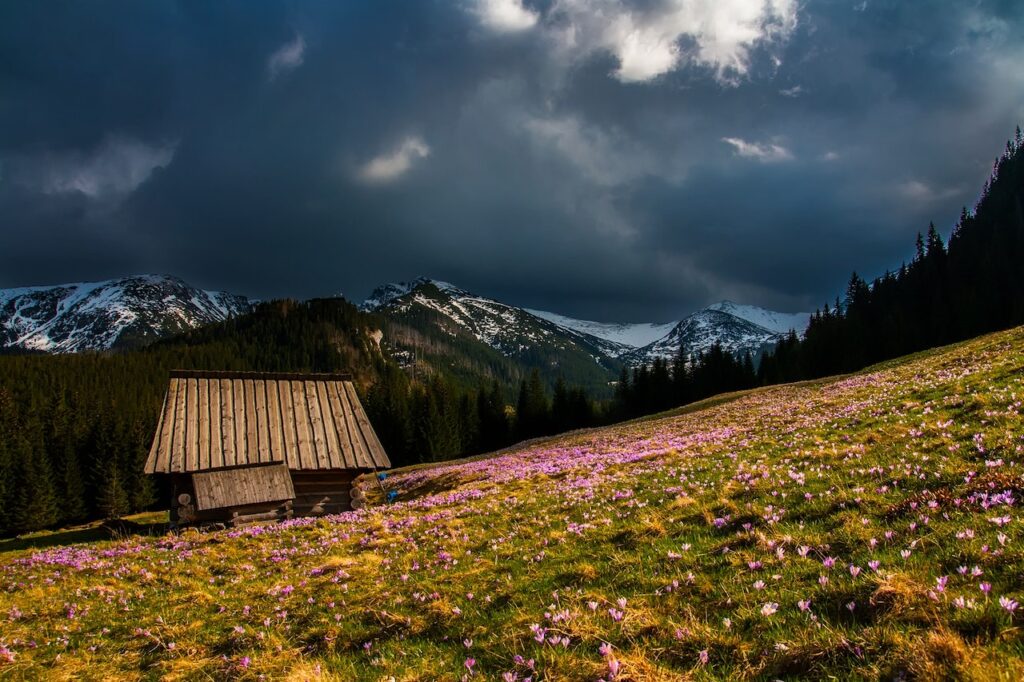
In the enchanting landscapes of Europe, where the natural world unfolds in breathtaking splendor, botanical hikers are bestowed with a treasure trove of floral wonders to explore. From the majestic Alps to the tranquil woodlands, Europe boasts a rich tapestry of wildflowers, each with its unique charm and significance. In this article, we embark on a journey through the continent to unveil the “10 Must-See Wildflowers in Europe for Botanical Hikers.” These remarkable blooms not only add a burst of color to the wilderness but also narrate the intricate story of nature’s resilience and adaptation in diverse ecosystems, making them a must-see for those who appreciate the beauty and diversity of Europe’s flora.
Edelweiss (Leontopodium nivale):
The Edelweiss is a symbol of the high alpine regions of Europe, particularly the majestic Alps. Its pristine white, star-shaped blooms are often found in rocky terrain at elevations above 1,500 meters. These hardy, velvety flowers have adapted to harsh conditions, and their rarity adds to their allure. Spotting an Edelweiss during a mountain hike is a rewarding and memorable experience, making it a cherished emblem of European botanical hiking.
Pasqueflower (Pulsatilla vulgaris):
The European Pasqueflower, with its enchanting violet-blue petals and feathery, silver-green foliage, is a welcome sight in the early spring months. This perennial plant thrives in well-drained, sunlit meadows and rocky slopes. The Pasqueflower, also known as the “Easter Flower” due to its blooming season, adds a splash of color to the landscape, signaling the arrival of the warmer season, and attracting botanical hikers with its delicate beauty.
Lady’s Slipper Orchid (Cypripedium calceolus):
Among the rarest and most striking of European wild orchids, the Lady’s Slipper Orchid is a sight to behold for botanical hikers. Its large, slipper-shaped blossom, ranging in color from pale yellow to pinkish-brown, stands out in woodland settings. This captivating orchid requires specific habitat conditions to thrive, making the chance encounter of a Lady’s Slipper Orchid a true botanical treasure.
Alpine Blue-sow-thistle (Cicerbita alpina):
Found in the enchanting landscapes of alpine meadows, the Alpine Blue-sow-thistle is a striking wildflower known for its vibrant blue-purple blooms. Its tall stems and deeply lobed leaves make it distinctive among alpine flora. Hikers exploring high-altitude regions are often rewarded with the sight of these remarkable flowers, adding a touch of color to the rugged beauty of the alpine environment.
Pyramidal Orchid (Anacamptis pyramidalis):
Named for its characteristic pyramid-shaped inflorescence, the Pyramidal Orchid is a captivating addition to the European wildflower landscape. Its rich pink to deep purple blossoms make it a standout feature of grasslands and rocky slopes. Hikers often encounter these orchids during late spring and early summer, and their unique appearance adds a sense of wonder to the natural world, making them a favorite find among botanical enthusiasts.
Globe Flower (Trollius europaeus):
The vibrant yellow blooms of the Globe Flower light up European wetlands and meadows during the spring and early summer months. These globular blossoms, perched atop sturdy stems, attract pollinators and hikers alike. The Globe Flower’s cheerful appearance and ability to thrive in damp environments make it a delightful and easily spotted wildflower during outdoor explorations.
Wild Pansy (Viola tricolor):
Known for its charming tricolored petals—usually purple, yellow, and white—the Wild Pansy graces meadows, open fields, and grassy areas across Europe. Its heart-shaped leaves and delicate blossoms make it a favorite among hikers. These resilient little flowers bring color and cheer to natural landscapes, symbolizing the beauty of simplicity in the wild.
Bluebell (Hyacinthoides non-scripta):
European forests transform into enchanting havens each spring when Bluebells carpet the woodland floor with a sea of striking blue-violet blooms. These graceful, bell-shaped flowers create a surreal and serene atmosphere, attracting visitors and photographers. The sight of a Bluebell forest is a magical experience, making it a cherished symbol of the changing seasons in Europe’s woodlands.
European Gentian (Gentiana):
The European Gentian family encompasses various species with stunning, intensely blue blossoms. These alpine and subalpine wildflowers are known for their bright, electric-blue petals, often in contrast to the lush green landscapes they inhabit. Gentians add a vivid splash of color to high-altitude regions, inviting hikers to discover their intense beauty amidst the rocky terrain and lush meadows.
Bee Orchid (Ophrys apifera):
The Bee Orchid is a marvel of mimicry in the botanical world. Its intricate blossoms closely resemble bees, attracting pollinators and bewildering hikers with their clever disguise. Found in grasslands and open areas, this orchid showcases the wonders of nature’s adaptations and serves as a captivating example of how plants can imitate the animal kingdom to enhance their reproduction. Encountering a Bee Orchid is like finding a hidden gem for any botanical hiker.